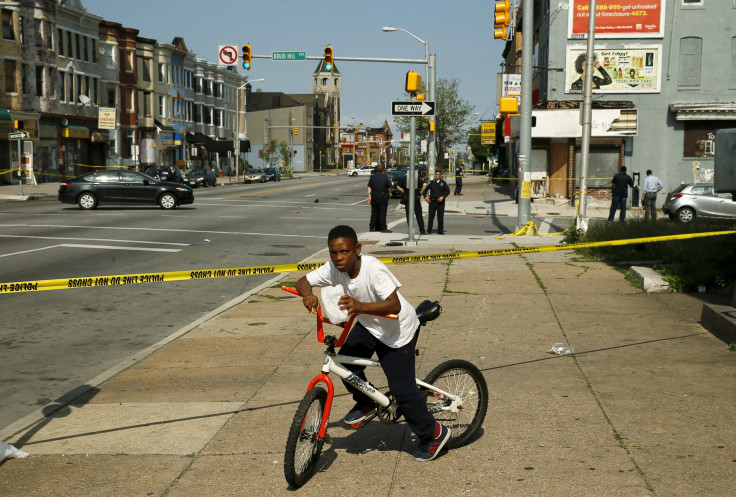Murder Rate Increase: Major US Cities' Homicides Spike In 2015

As the summer of 2015 comes to an end, startling numbers from some of the biggest cities in the United States have emerged. After years of decline, more people are getting murdered, and experts aren't sure why.
For several cities, the increase has been dramatic, according to a new report by the New York Times. In Milwaukee, which experienced the biggest increase at 76 percent over the same period last year, 104 people have been killed so far this year. That city, which has its own Black Lives Matter anti-police brutality movement, is followed by others that have been at the center of the issue of race and policing in America: St. Louis had a 60 percent increase and Baltimore had a 56 percent increase.
Some blame the press around the killings of unarmed black men by police for focusing the public eye on officers, leading to less aggressive police tactics and an emboldened criminal element. Some blame rival street gangs, drugs and the availability of firearms. Some simply recognize that, for whatever reason, people seem more willing to resort to violence for arguments that many would consider petty.
"Maintaining one’s status and credibility and honor, if you will, within that peer community is literally a matter of life and death,” Edward A. Flynn, Milwaukee’s police chief, told the Times. “And that’s coupled with a very harsh reality, which is the mental calculation of those who live in that strata that it is more dangerous to get caught without their gun than to get caught with their gun.”
Some murders even stem from arguments on Facebook or arguments over women or TV characters.
Still, the murder rate is nowhere near the highs seen in the 1980s and '90s. The height of that crime wave, fueled by the crack cocaine epidemic in urban communities, came in 1993, when New York City experienced 2,200 homicides. The homicide rate there has plunged over the past 20 years. New York, which saw a 9 percent increase in murders so far this year compared to last, still has an enviably low homicide rate per capita and has seen 208 deaths so far this year.
In Chicago, where the most homicides were recorded so far this year (294, a 20 percent increase), police are skeptical of the call to reduce prison populations. Members of both parties have been speaking to prison reform policies over the last several months. But most focus on reforming sentencing for non-violent drug crimes.
"Across the country, we’ve all found it’s not the individual who never committed a crime before suddenly killing somebody,” said Chicago Police Superintendent Garry McCarthy, according to the Times. “It’s the repeat offenders. It’s the same people over and over again.”
Not all cities have been a part of this trend. Cincinnati and Newark, New Jersey, for example, have maintained steady homicide rates this year.
Follow me @ClarkMindock
© Copyright IBTimes 2024. All rights reserved.












